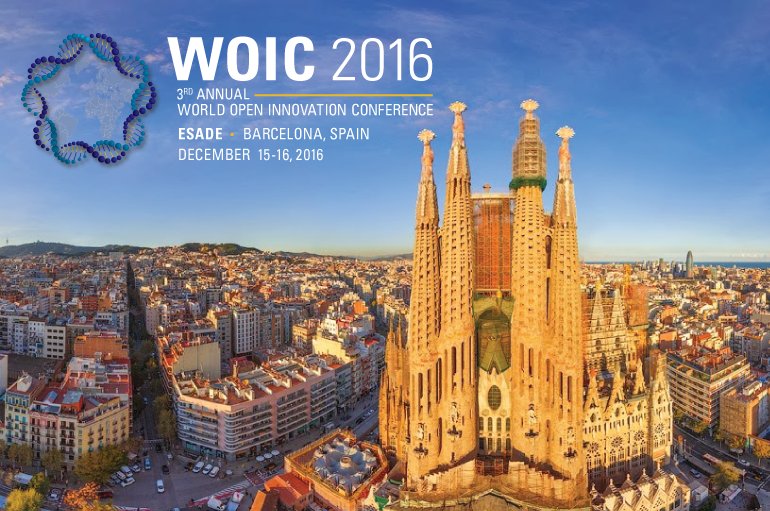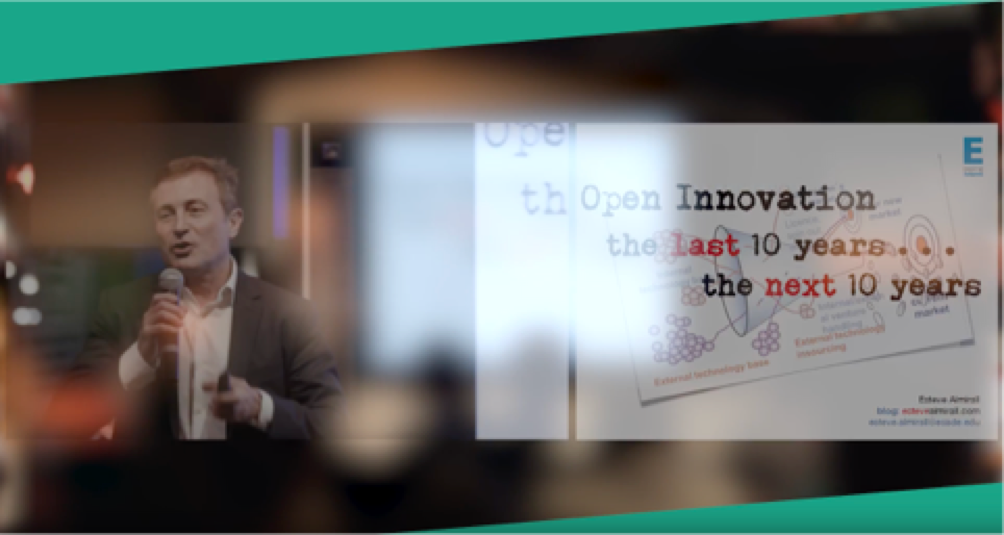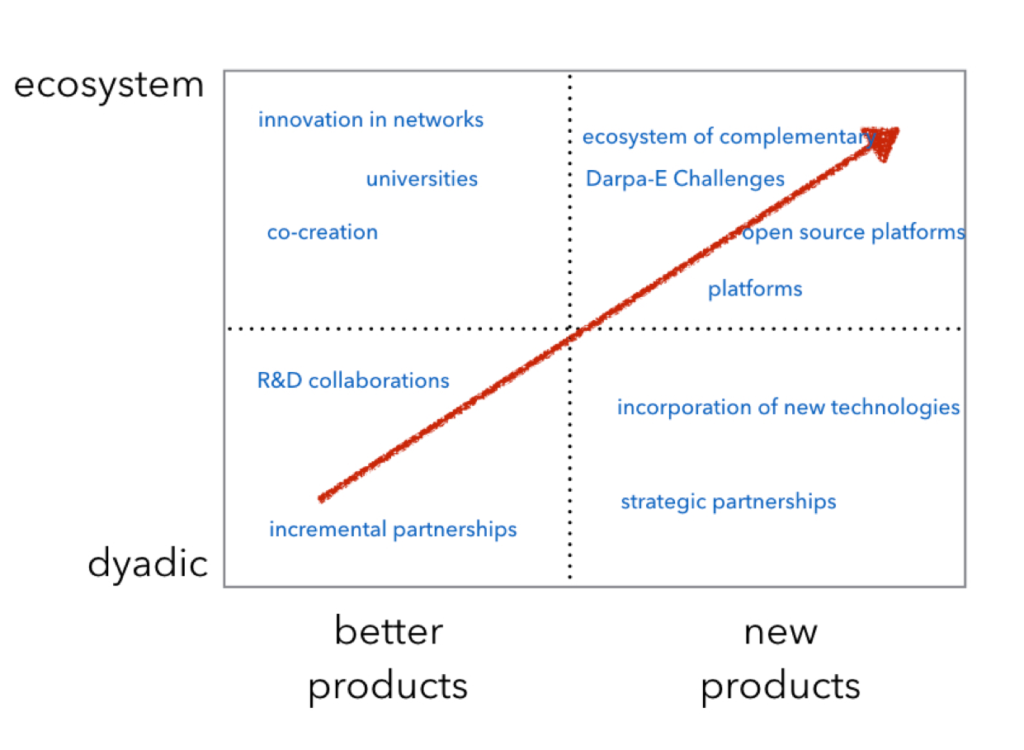Open Innovation – the Last 10 years – the next 10 years
During December 15-17 we had in ESADE Barcelona the World Open Innovation Conference 2016. About 250 scholars, industry, government and researchers gathered to present, network and talk about Open Innovation in what is possibly the largest conference in the world on this area.
It will be difficult to highlight only a few things because we had so many. From the State of Open Innovation introduced by Henry Chesbrough to the commitment on Open Innovation of the European Commission presented by Carlos Moedas or the one of the City of Barcelona introduced by Francesca Bria. Or the intersection between Open Innovation and food with Ferran Adrià and Marcel Planellas or with soccer with Ivan Bofarull. The state of Open Innovation in China. Even a food hackaton held by Soh Kim from Stanford and myself.
Of course, lots of papers, academic research and also challenges posed by companies where academic and industry can both relate and discuss.
It was a really nice conference with many different flavors, reflecting the reality of a discipline that is becoming increasingly important as companies move towards ways to compete where innovation is more prevalent.
A few weeks ago I had the opportunity to give a talk in Berlin invited by Fraunhofer FOKUS (Vielen Dank !!!) about the past, the present and the future of Open Innovation.
For the ones interested, you have it here
There I made a quick review of what happened so far and where the discipline could be heading.
If we need to choose a year as the starting point of Open Innovation, maybe this could be 2003. This was the year when Henry Chesbrough’s published his book “Open Innovation” and the term was coined and attached to its actual meaning.
More than ten years ago, Open Innovation was the answer to companies badly in need to inject more innovations into their pipelines while reducing risk and increasing their success rate. Possibly there is no better example of this need than Procter & Gamble and its bet on Open Innovation that resulted in the reborn of a company then in severe difficulties by introducing new products such as the Spin Brush, this electrical toothbrush that now we all use every day. P&G success is probably behind the projection of Open Innovation and marked its evolution.
Already in the beginning there were many ideas around but the main one was to put at the same level the innovation produced inside companies with the one produced outside. That resulted in a quest for half-baked novel products and proposals that could be easily integrated into the existing product lines.
The idea of a portfolio of innovations both from the inside and the outside with different degrees of maturity and risk was born at that time.
This quest for novel and proposals coming from outside the boundaries of the company solved the innovation problems of organizations like P&G but created a new one: how to find and evaluate them in a reasonable amount of time. After all there are 7B people in this planet and lots of proposals coming from everywhere. This problem gave way to Open Innovation intermediaries, whose task was precisely that, find a provide a first evaluation of external proposals that could fit the needs of companies.
At that time as you can see Open Innovation was very dyadic, company A in need of a new product that finds it in company, research centre, … B.
The rise of the Internet during the last decade changed all this as many other things. Crowdsourcing, Competitions, Innovation Platforms, … and also the increasing role of users that had more and better capabilities and were able of producing new proposals changed this dyadic relationships into networks, platforms and ecosystems.
We have witnessed a movement in two directions resulting from the interaction between market demands and new ways to compete created by widespread use of Internet.
On one side the demands of the market shifted towards competing on innovation. Markets didn’t value better products as much as novel products. In part because products were already good enough. In part because incremental innovation has been taken for granted. In part because it was increasingly difficult to capture lots of value with incremental innovation and companies shifted to radical innovation in order to create temporary monopolies and capture more value.
On the other side, technology allowed a shift in the way companies gather these innovations. Dyadic relationships were no longer the only option and networks, platforms and in general the concept of ecosystems appeared and evolved.
Organizations who open their boundaries and compete in networks, platforms or ecosystems were most successful in terms of innovation and could capture more value in markets, thus reinforcing the market tendency towards novel offerings, new products, more radical innovation.
Reading all this one may be tempted to believe that everything will be done at ecosystem or platform level and dyadic relationships are dead. However, if we look at some of the most successful products, particularly the ones that require high investment and a high level of sophistication, you can observe that partnerships are not dead at all. Not everything is modular, easily changeable and as plastic as software where ecosystems shine.
Also, other people could be tempted to undervalue incremental innovation, qualifying it as improvements instead of innovations. A quick look to the way that successful companies such as Apple, use this incremental innovation easily convince us that it is far from dead. Just remember how the iPod became the iPhone and how it slowly evolved to the sophisticated product that we have now. In fact, if we change only a few characteristics at a time and we continue to do that for a long time … we will have a new product while reducing risk and the needs of finance its evolution. We only have to convince enough people to continuously buy it, not an easy task but many did it.
There is however a fundamental aspect that Open Innovation brought to us. Open Innovation opened our minds to the understanding that the search process that guides innovation shouldn’t necessarily be an individual one but could be a collective search mechanisms. Meanwhile Open Innovation has become the gold standard in Innovation Management. While this happened this collective search process has taken many forms: intermediaries, platforms, networks, competitions, crowds, … you name it. The search process has evolved using the technological advances at hand to solve the same all problem, in a 7B people planet where do I find this new innovation that is going to make this product or service a global hit.
Now, technology is evolving fast towards better solutions of this search problem and no doubt, they will be incorporated to solving the problem of innovation, to recombine with existing solutions and create new exciting products and services.
Platforms and technology will become an even more integral part of innovation management as our capacities to relate, search, communicate and envision new opportunities are augmented by technology. So, if you thought that the past 10 years were exciting, wait to see the next ten !!!



